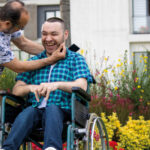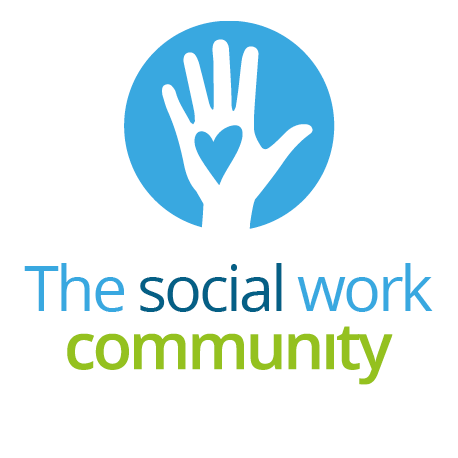Neil Garnham QC highlighted 12 missed opportunities to
protect Victoria Climbie in his closing evidence to the Laming
inquiry this week. Lauren Revans, Sally Gillen
and Rachel Downey report.
1. Visits made by Kouao and Victoria to Ealing social
services during spring 1999
Ealing duty social workers dealt with the case as it was seen as
a housing and finance issue. Gaps left by workers taking time off
meant the assessment process was never fully completed. After the
case had drifted for two months, Victoria and Kouao were allocated
a social worker, Pamela Fortune. An assessment interview was
arranged with an interpreter for 17 June but Kouao attended alone
and was not co-operative. Fortune said she found it difficult to
complete the assessment but did not consider it important as a
decision had already been made to stop subsistence payments to
Kouao and offer her tickets to return to France. Observations about
the contrast between Victoria’s and Kouao’s appearances and the
lack of an obvious mother/daughter relationship were not documented
because social workers felt they were not “important enough” and
that it was not unusual for clients to dress their children
shabbily in the hope of obtaining more financial assistance.
2. Anonymous phone call to Brent’s one-stop-shop 18 June
1999 and visit to Nicoll Road 14 July 1999
Although details of an anonymous call from Marie-Therese Kouao’s
cousin Esther Ackah to Brent’s one-stop-shop, which included
concerns about cuts and bruises on Victoria, were faxed to Brent’s
children’s services at 4pm on Friday 18 June, intake and duty team
manager Edward Armstrong said it never arrived. Armstrong said a
telephone referral was instead received three days later, which
included concerns about Victoria wetting herself but nothing about
cuts and bruises. The case was consequently classified as “child in
need”.
Armstrong said he arranged two unannounced home visits to Nicoll
Road in Brent, where Kouao and Victoria were staying in temporary
accommodation. This happened before the official visit but
Armstrong said he could not remember the names of the social
workers he sent, and there was no record. The two social workers
who made the visit on 14 July found nobody home but a connection
was made later that day to a separate referral following Victoria’s
admission to Central Middlesex Hospital.
Armstrong was unable to explain why it had taken almost a month
for the home visit to take place.
3. Victoria’s admission to Central Middlesex Hospital on
14 July 1999
Staff at the hospital failed to pick up on warning signs of
abuse when Victoria was brought in by Avril Cameron, the daughter
of Victoria’s unregistered childminder, Priscilla. She stayed in
hospital for just one night before being discharged back to Kouao’s
care.
Early suspicions of non-accidental injury were overruled by
consultant paediatrician Dr Ruby Schwartz, who diagnosed scabies.
Mentions of marks on the child’s body that may not have been due to
scabies were not noted. Another doctor wrote on the notes that
there were “no child protection issues”, a phase repeated in the
referral letter to social services.
Schwartz allowed Victoria to be discharged without investigating
GP, school, or childminding arrangements, although she had assumed
the latter two would be investigated by social services.
She admitted she failed to take clinical responsibility for
Victoria’s discharge and her notes had been “totally
inadequate”.
Schwartz claimed she spoke to social services on the discharge
day but inquiry counsel suggested this was untrue.
Nurse Paula Johnson told the inquiry that as Victoria was not
registered at school or with a GP, there was nobody to whom to send
a discharge letter. She admitted she did not know about the
education welfare service.
Senior social worker in Brent’s child protection team Michelle
Hines contacted Brent child protection police officer Rachel Dewar
to have Victoria placed under police protection as soon as she
received the Central Middlesex Hospital referral at 5pm. She
intended to carry out a full investigation the following day.
However, the police protection was withdrawn the next morning
after a doctor told Hines that Victoria’s case was not one of child
protection but housing and finance.
Hines accepted that it was a shortcoming that she had never seen
Victoria before lifting police protection.
Inquiry counsel criticised both Hines and Dewar for accepting
Schwartz’s diagnosis without question.
Dewar, who admitted she had no training in investigating child
protection cases, but had “picked up” knowledge on the job,
maintained that further investigations were not needed because
database checks had shown that the family was not known previously
to any other agencies in Brent – an explanation the inquiry did not
think reasonable.
4. Victoria and Kouao’s visit to Ealing’s Acton area
office on 15 July 1999
When Kouao returned to Ealing social services the day after
Victoria was discharged from Central Middlesex Hospital, she was
told that her case had been closed. Social worker Pamela Fortune
said she was unconcerned about Victoria’s welfare because Kouao had
a part-time job so could provide financially. She also presented as
a loving mother.
In response to an inquiry from Brent, Fortune sent a summary of
Ealing’s involvement in Victoria’s case. Concerns about Victoria
being left alone in the reception were not passed on.
5. Victoria’s admission to North Middlesex Hospital 24
July 1999
Victoria was not interviewed by a social worker until two weeks
after she was first admitted to NMH for burns, despite initial
suspicions of non-accidental injury.
Hospital social worker Karen Johns, employed by Enfield social
services department, said she did not have a “clear suspicion” of
child abuse from the first referral on 26 July so “would not have a
purpose” to see the child. Johns passed the case to Haringey on 27
July.
Communication between social services and hospital staff was
poor. Social workers were not attending psychosocial meetings at
the hospital and hospital staff were not attending strategy
meetings in social services offices so there was no forum for
crucial information exchange.
Senior practitioner Rose Kozinos, who chaired the strategy
meeting, did not read Victoria’s referral before it. She expected
the allocated social worker to speak to Victoria as part of the
risk assessment and that progress on the recommendations would be
checked in supervision between the team manager and allocated
social worker.
Haringey social worker Lisa Arthurworrey found she had been
allocated Victoria’s case when she returned from leave on 2 August.
She had never done a case conference in Haringey, never conducted a
joint 47 investigation, never undertaken a section 47 investigation
when a child was in hospital, and was not memorandum trained. She
also had a caseload of 19, well over Haringey’s recommended quota,
and complained she was poorly supervised.
Meanwhile, failures by the nurses on Rainbow ward at the
hospital to note their suspicions that Victoria had suffered
physical abuse and that the relationship with Kouao was an abusive
one meant that the full story never reached Arthurworrey and child
protection police officer Karen Jones. A new set of child
protection forms should have been used as nurses became aware of
belt buckle marks and signs suggesting Victoria had been struck
with an instrument but they continued to rely on the initial set of
forms. Nurses also incorrectly assumed that social workers could
discharge a patient.
Consultant paediatrician Mary Rossiter admitted she failed to
realise that what seemed a very obvious case of child abuse to her
had not been comprehended by social services.
Arthurworrey said she understood a fax from Johns to mean that
the hospital felt Victoria was ready for discharge in the general
sense, rather than just that she was medically fit to go home.
She did not begin a full assessment because she did not have a
medical report that gave “clear diagnosis of non-accidental
injury”. She needed an “understanding of the hospital’s concerns”
before she met with Victoria, and the home visit needed to be
carried out before an assessment.
She failed to carry out a home visit prior to Victoria’s
discharge because Karen Jones feared catching scabies. But by the
time Victoria was discharged, Arthurworrey was sure there was no
scabies in the flat.
At the home visit, Arthurworrey did not ask Kouao how she and
Victoria would spend a typical day or what Victoria’s interests
were, saying she had no reason to doubt Kouao’s credibility. She
accepted she failed to analyse the information before her but said
this was partly because of lack of supervision. Inquiry counsel
Neil Garnham said there was a “battle of conflicting assumptions”
between Arthurworrey and the hospital about who would do what.
Jones said she did not speak to Victoria because she was waiting
for the doctor’s report – which she had asked Johns to secure.
Garnham described Jones’s investigation as “inadequate”. Jones
said she accepted Rossiter’s diagnosis and did not feel able to
challenge a consultant’s opinion.
6. Referral to the Tottenham Child and Family Centre on
5 August 1999
A referral was received at the NSPCC-managed Moira Close family
centre from Haringey senior practitioner Barry Almeida for an “Anna
Kovao” at a time when most of the centre’s resources were focused
on a family activity scheme that was due to finish.
The weekly managers’ meeting – where referral forms would
usually be allocated to practice managers – was cancelled because
of a party for service users, so Victoria’s case was not allocated
until 13 August.
The case was allocated to practice manager Sylvia Henry, who
said she spoke to Almeida after 13 August and was told the family
had moved out of the borough and the case was closed.
But this entry was not signed or dated and Almeida has no
recollection of any such conversation. Arthurworrey was not aware
of the referral to the centre.
7. Health visitor referral in early August
1999
Liaison health visitor at North Middlesex Hospital Rachel Crowe
told the inquiry that she referred Victoria’s case to community
health visitor Luana Brown. However, Brown said it never reached
her – so there was no follow-up service.
8. Visit to Manning’s flat in Somerset Gardens by Lisa
Arthurworrey on 16 August 1999
Arthurworrey “regretfully” did not see it as part of her
function to try to get a sense of what a day in the life of
Victoria was like and, because she had not properly read the fax
that arrived from Central Middlesex Hospital on 12 August, she was
not aware of the involvement of a childminder. She was “not overly
concerned that Victoria was not in school because she was a foreign
child in a foreign country, of no fixed abode and living in
temporary accommodation”.
She could not assess emotional abuse on one visit. She said she
saw the master and servant relationship observed by hospital staff
as the “type of relationship…that can be seen in many
African-Caribbean families because respect and obedience are very
important features on the African-Caribbean family script”. She
insisted she came to that conclusion only after noting there were
no concerns about the interaction between Victoria and Kouao. She
admitted that these cultural assumptions should have been discussed
in supervision.
Her team leader Carole Baptiste did not read or ask to read the
strategy meeting notes during supervision and, on the basis of a
five or 10-minute conversation and a skim through the Central
Middlesex Hospital fax, agreed that Victoria’s was a family support
case.
9. Mary Rossiter’s letter received by Petra Kitchman on
20 August 1999
Child protection adviser Petra Kitchman said it was “not
unusual” for letters from North Middlesex Hospital to take a week
to arrive at the social services department, as was the case with
Rossiter’s letter, written on 13 August. She phoned Rossiter the
day it arrived to find out what her concerns were, then phoned
Haringey to check that a social worker had been allocated, a
strategy meeting had taken place, and a section 47 investigation
was under way.
Rossiter suggested a social work assessment, an urgent planning
meeting, and a referral to a child psychiatrist. Kitchman knew a
social work assessment would be included in the section 47
investigation, and expected an urgent planning meeting and child
psychiatrist referral to be considered as part of the same
process.
Arthurworrey said she would not have told Kitchman on 20 August
that the section 47 was ongoing because it was closed on 16
August.
Kitchman wished she had read Victoria’s file because she would
have seen that a proper section 47 investigation had not been
completed.
10. Second letter from Rossiter to Kitchman dated 2
September 1999
Rossiter’s second letter arrived on 9 September, while Kitchman
was on leave, so it remained unopened until she returned on 23
September. Kitchman assumed that her manager, Ann Graham, would
check her post. She did not respond to the letter immediately as
she felt it was not new information and waited until her next visit
to the North Tottenham office on 28 September but couldn’t find
Arthurworrey. She eventually spoke to Arthurworrey on 1
October.
She accepted that, given the level of Rossiter’s concerns, she
should have had a formal consultation with Arthurworrey. Instead
they had an informal chat.
Arthurworrey denied ever seeing the second letter or discharge
summary prior to Victoria’s death. In her reply to Rossiter on 19
October, Kitchman gave the impression she was content that
everything was in order, but she told the inquiry she was not
“fully sure” because of Rossiter and Schwartz’s conflicting views.
She failed to point out these conflicting opinions in her
letter.
She admitted she failed to provide Arthurworrey with any proper
advice in relation to Victoria’s case.
Arthurworrey did not see Kitchman’s reply until 15 November. She
felt it contained inaccuracies but failed to take this up with
Kitchman because she thought it dealt with old events. She did not
make the connection at the time to the references in the letter to
a discharge summary and the fact she hadn’t seen it. She dismissed
the reference to looped wire marks as a prediagnosis concern,
despite it being made post-discharge.
11. Sexual abuse allegation on 1 November
1999
Following the allegations that Manning had sexually abused
Victoria, Arthurworrey arranged for Kouao and Victoria to stay with
friends but failed to check on the adequacy of the friends’ house
as a refuge.
Kozinos admitted she did not read the case file before the
second strategy meeting after Kouao retracted the allegations.
Neither a risk assessment nor a case conference were given a
written deadline and a review meeting was not considered.
Arhurworrey said it was “wholly unacceptable” that the case
conference was not arranged and she did not arrange to see Kouao
until 19 November.
She had no specific training in sexual abuse allegations and was
not familiar with Haringey’s child protection guidelines on dealing
with initial investigations and risk assessments for sex abuse
cases. No sense of urgency had been communicated to her either at
the strategy meeting or after Kouao failed to show up for a meeting
on 1 December.
Arthurworrey admitted that by the deadline set by team manager
Angella Mairs, she had tried to make contact with Kouao and with
the French Consulate but nothing else had been done. She was told
Victoria and Kouao had gone back to Manning’s. She was unable to
take the investigation any further because most of the
recommendations from the second strategy meeting required her to
have contact with the family.
Jones decided not to act on the sex abuse allegation until after
the strategy meeting because she tended to agree with social
services that it was false and was another attempt to obtain
housing. A letter to Kouao requesting a statement as to why the
allegations had been withdrawn was delayed for weeks because Jones
wanted it to be translated into French. Inquiry counsel said Jones
should have interviewed Victoria immediately after the allegation
was made and should have visited Manning.
Jones was on leave for three weeks in November and December and
failed to let her manager know the case needed to be followed up
urgently.
12. Three visits by Lisa Arthurworrey to Somerset
Gardens in December 1999 and January 2000
When Kouao failed to turn up at the social services department
on 1 December, Arthurworrey made the “dangerous assumption” that
she and Victoria may have gone back to France.
Arthurworrey had told Mairs this theory during their first
supervision session together on 15 November. Mairs assessed it was
a family in need case not a case of physical abuse. She admitted
she did not read Victoria’s file but denied that Arthurworrey told
her about the sex abuse allegations and the second strategy
meeting.
Mairs gave Arthurworrey a list of tasks to complete by 17
December and told her that “if there were no further concerns”
after these had been carried out, closure of the case should be
considered. She suggested closing the case but only when the
assessment of Victoria had been completed and a discussion had been
held with the team manager.
Responsibility for Arthurworrey’s supervision moved to Kozinos
at the end of November. In their introductory session on 23
December, only about five minutes were devoted to Victoria’s case.
Kozinos said she did not even “flick through”, let alone read,
Victoria’s file.
Arthurworrey said she had completed the investigation and that
two previous managers had asked her to close the case and not take
it to case conference and Kozinos accepted this. She regretted not
following up the decision not to hold a case conference but doubted
herself and put faith in Mairs’ more experienced judgement.
She denied that Arthurworrey told her she had not managed to
make any contact with Victoria since the strategy meeting despite
three calls to the house, and that no assessment had been done.
Arthurworrey admitted that the unresolved issues in Victoria’s
case were still on her mind when she wrote a “very basic” letter to
Kouao on 18 February informing her that Victoria’s case would move
to closure if contact with the department was not resumed.
Meanwhile, Jones heard social services had closed their file and
wrote a report saying the allegation could not be
substantiated.



 Bournemouth, Christchurch and Poole
Bournemouth, Christchurch and Poole  Hampshire County Council
Hampshire County Council  Oxfordshire County Council
Oxfordshire County Council  South Gloucestershire Council
South Gloucestershire Council  Wokingham Borough Council
Wokingham Borough Council  Providing a lifeline for social workers who want to get back into the sector
Providing a lifeline for social workers who want to get back into the sector  The highs and lows of a children’s services’ transformation journey
The highs and lows of a children’s services’ transformation journey  Embedding learning in social work teams through a multi-agency approach
Embedding learning in social work teams through a multi-agency approach  The family safeguarding approach: 5 years on
The family safeguarding approach: 5 years on  Harnessing social work values to shape your career pathway
Harnessing social work values to shape your career pathway  Workforce Insights – showcasing a selection of the sector’s top recruiters
Workforce Insights – showcasing a selection of the sector’s top recruiters  Join our team to help technology enabled care transform lives in Nottinghamshire
Join our team to help technology enabled care transform lives in Nottinghamshire 

 Facebook
Facebook X
X LinkedIn
LinkedIn Instagram
Instagram
Comments are closed.